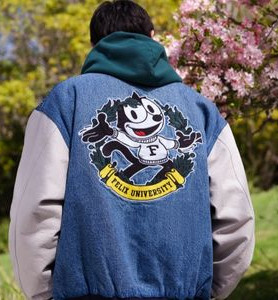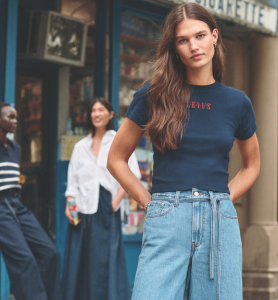Why the Gucci Horsebit 1955 is still the bag that time can’t touch
There are handbags that come and go, churned out with the seasonal efficiency of fashion’s ever-ticking clock. And then there are the ones that settle into our collective style subconscious—bags that age like good gossip or a perfectly worn leather jacket. Gucci’s Horsebit 1955 is the latter. It doesn’t scream for attention, but it doesn’t need to. It’s the quiet girl at the party with the best stories—the kind of bag that makes you want to lean in.

You’ve seen it before, even if you haven’t recognised it (subtlety is part of the bag’s charm, after all). Maybe in a paparazzi shot of a '90s Carolyn Bessette-Kennedy lookalike striding through SoHo. Or on the arm of Harry Styles in a campaign that blurred gender and time with the ease of a soft-focus filter. Most recently, it’s been seen tucked beneath the arms of Julia Garner, Hanni from NewJeans, and Halle Bailey—each woman wearing it not as a costume of retro glam, but as something deeply present, tactile, and wholly theirs. That’s the paradox of the Horsebit 1955: It belongs to every era and yet feels immune to all of them.
Here it starts with the hardware. The bit in Horsebit is literal—borrowed from the equestrian world, where Gucci founder Guccio Gucci found inspiration in the refined, aristocratic culture of horseback riding. By the 1950s, the bit—two interlocking rings bridged by a bar—had already been stamped onto loafers that would become essential in Upper East Side closets and Milanese menswear alike. But in 1955, Gucci did something clever: it fastened the motif to a shoulder bag, giving the house a signature that was neither logo nor gimmick, but a nod to heritage so elegant it could pass as jewellery.
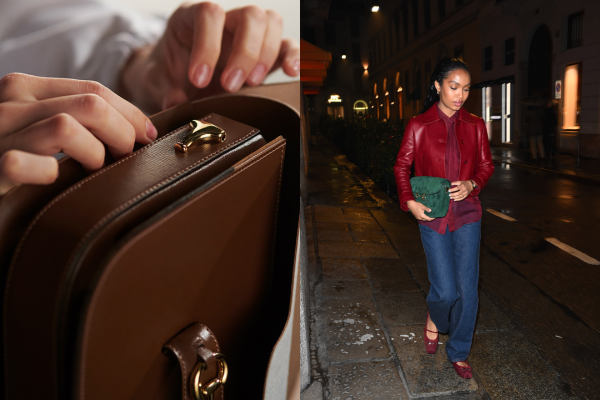
It was, essentially, the anti-It bag. While trends swirled around it—from the wild monograms of the early aughts to the micro-bag revolution of the 2010s—the Horsebit 1955 held its shape. It didn’t need reinvention. It needed only the occasional reintroduction, like a well-aged wine brought out for the right guests.
If the original Horsebit 1955 was for the type of woman who matched her gloves to her pumps, the current iteration speaks to a different kind of polish. She’s less precious, more nonchalant. She tucks the bag under her arm like a paperback novel. She wears it with jeans, or an oversized blazer, or maybe a sheer organza dress that looks like it was thrifted from a Parisian store that only the cool girls know about. The point is, she doesn’t try too hard—because the bag does the heavy lifting.
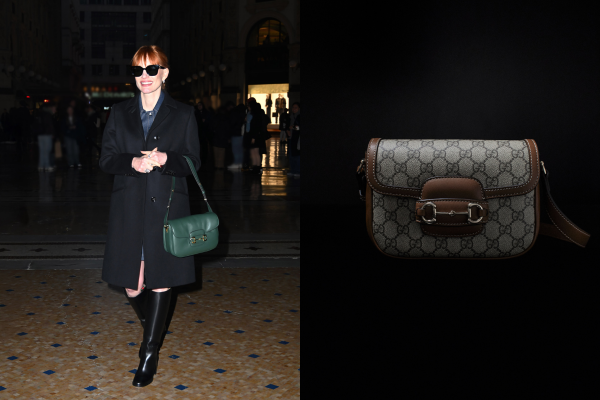
There’s something undeniably intimate about the structure of the Horsebit 1955. It's a shoulder bag that invites closeness. It hangs against the body in a way that feels sculptural. It’s not boxy, exactly, but there’s an architectural logic to it—straight lines balanced with just enough curve to keep things sensual. It whispers rather than shouts, which is probably why it keeps showing up on people we describe with words like effortless and cool.
Gucci’s recent collections have leaned toward a more pared-back, almost minimalist aesthetic—yes, Gucci, minimalist—which feels like the right moment for a bag like the Horsebit 1955 to own its power. It doesn’t need maximalism to be memorable. In fact, it thrives in understatement. Now rendered in everything from GG monogram canvas to high-gloss black leather, the bag feels more like a platform than a product. A blank page with a beautiful signature.
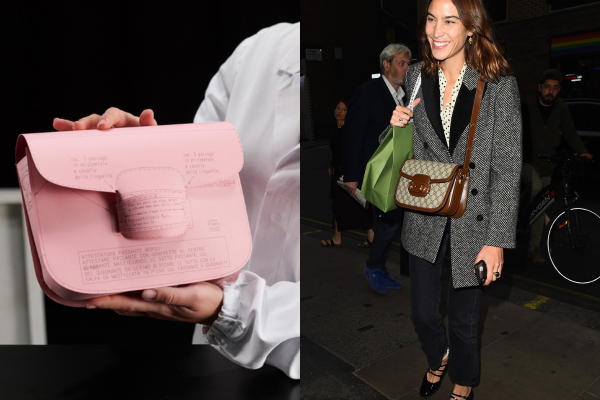
And as an antidote to our current fashion climate, the joy is that the Horsebit 1955 doesn’t need a viral moment because it’s had real ones. Jackie Kennedy carried it when she wasn’t carrying the Jackie (yes, she did stray). Princess Diana wore it when off-duty looked more like off-the-runway. More recently, Harry Styles gave it new context—worn crossbody over a lace blouse, reminding everyone that good design doesn’t care about gender. These aren’t just celebrity sightings. They’re style artifacts. Proof that the bag functions not only as an accessory but as an extension of character. And isn’t that the dream? To own something that grows with you, not out of you?
There’s a kind of defiance in lasting this long. In fashion, where newness is currency, the Horsebit 1955 insists on value and endurance. It’s still handcrafted with the precision and care of something meant to be passed down. The stitching is exact. The hardware is weighted. The leather ages like your favourite pair of boots—softening, deepening, improving. It doesn’t need bells or whistles or logo-embossed theatrics. Its power lies in its integrity. This bag doesn’t care if it’s your first Gucci or your fiftieth. It doesn’t care if you’re 19 or 79. It’s not asking you to buy into a trend. It’s offering you permanence—a rare commodity in a world addicted to the scroll.

After all, the Gucci Horsebit 1955 is not the kind of bag that clings to a season’s narrative. It doesn’t fit into a TikTok trend or demand a Pinterest mood board. Instead, it hums with something more elemental: elegance, yes—but also restraint. Stability. Story. The kind of thing you don’t need to explain because it explains you. And maybe that’s the ultimate luxury—not having to say anything at all.
Gucci Horsebit 1955 is available to purchase online and at Gucci Newmarket and Gucci Queen Street stores.



